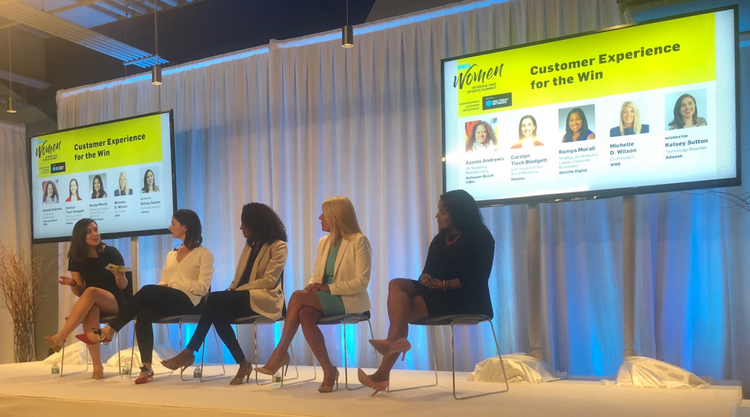Yesterday, we held a live Twitter chat with three PubMatic experts to discuss header bidding and auction dynamics. The landscape is anything but clear so we wanted to make it less opaque.
To start, let’s define some of the basic terms.
Auction dynamics are simply the forces that affect the price paid for an impression in programmatic auctions. But header bidding and wrappers can fall under a few different categories. Header bidding refers to a technology that simultaneously collects multiple bid requests and responses before passing them through to an ad server.
So, what are the key questions you should be asking about header bidding and auction dynamics? Check out our transcript from yesterday’s discussion to learn how our experts break it down.
Question 1: What are the key differences between the waterfall and header bidding auctions?
BILL: The old waterfall model inhibited the amount of data passed to DSPs. The tag-based waterfall method can also miss unique demand. Header bidding exposes a greater portion of publisher impressions, which increases the data DSPs can action and bid on.

ANDREW: In the waterfall model, impressions are processed asynchronously, so not all demand gets the chance to bid. With header bidding and wrappers, publishers can now send a single impression to multiple SSPs in parallel. In addition, the SSP determines the clearing price and the publisher determines the auction winner.

CRAIG: Header bidding has made significant improvements over the waterfall, but some inefficiencies remain. In the current header bidding environment, the highest bid doesn’t always win the auction. And even if the highest bidder wins, there may be a higher second price that would affect clearing price. So, improvements are needed.
Question 2: What is a dynamic floor in a #programmatic auction and how does it affect auction dynamics?
BILL: Dynamic floors protect the value of a publisher’s inventory and alleviate concerns around correct value capture from buyers. The downside to having a floor is that if the floor is too high, the impressions can go unmonetized.
ANDREW: Dynamic floors use data from publishers and buyers to simulate bid density by basically adding another floor to the auction. A dynamic floor is just one lever that impacts the price a DSP pays for media. Other levers include modified second price auctions and buy-side fees charged above closing price.

CRAIG: Dynamic floors are a prediction of the value of an impression to buyers, closing the auction closer to first price. This results in the buyer’s cost of media being higher than if the SSP had run a true second price auction.
Question 3: What does the future of header bidding auction dynamics look like?
BILL: The future model will allow publishers and tech companies to focus on creating value and improving overall industry economics. When the publisher can control auction decisions, they can enrich impressions with data that buyers care about. Ideally, in the future, buyers should be charged based on the competitiveness of the auction, not what they bid.
ANDREW: I expect second price auctions to remain prevalent, but the publisher will determine the winner and clearing price instead of SSPs. This will provide the most accurate view of the bid landscape and maximizes publisher control of revenue. Realistically, infrastructure costs will also go up. Bid throttling and efficient computing will become increasingly important.
CRAIG: The future is more win-win. I think there will be more control over revenue streams, reduced auction inefficiencies and more value to buyers. Unless publishers take back control, they risk losing insight into a buyer’s first price. I expect the focus of header bidding technology to return to the metrics that matter – ROI and yield.
Question 4: What is the role of the SSP in the future, as publishers reclaim control of auction decisions?
BILL: The value prop of SSPs will remain to provide publishers with access to unique demand through tech innovation. All of this being done in a holistic platform should help publishers fully embrace programmatic.
ANDREW: The role of the SSP is to drive positive results for publishers. Ownership of the auction decisions shouldn’t affect that. SSPs will continue to provide tech innovation and expertise to help publishers take advantage of the evolving landscape.
CRAIG: SSPs will need to become truly omni-channel and expand into programmatic direct (i.e. PMP, Biddable IO, etc.). Moving into newer areas like unified ad serving will also be important for SSPs and publishers alike.
Question 5: What are the barriers to getting to this future model of header bidding?
BILL: The current header bidding model is significantly better than the old waterfall process so there hasn’t been a huge push to move yet. Also, significant investment is required by publishers to adopt this new model, but we believe the value would be worth it.
ANDREW: A header bidding auction where the publisher owns decisions is a big change to the SSP business model, so adoption has been slow.
CRAIG: Conducting auctions on the publisher-side is a significant investment and only a few publishers have adopted it thus far; at PubMatic, we see the benefits of this new model. We want to be leading the charge into the future.
Question 6: Other than changes to header bidding auctions, what are the biggest trends you expect to see in programmatic?
BILL: I think we will see the consolidation of SSPs. The DSP fear of losing agency budgets for “not having supply access” should dissipate as SSP partners become omnipresent.
ANDREW: As more publishers embrace header bidding, the cost of infrastructure will become a focal point for technology companies. Bid throttling, efficient computing, and a lower cost of capital will become ever more important.
CRAIG: Publisher control will be a key theme in programmatic going forward. I hope efficient bidding will grow in importance for buyers while sellers will have more control over auction rules.
To learn more about auction dynamics, download our primer here and set up time to meet with us at dmexco. Also, make sure to mark your calendars for our Twitter chat next week focusing on a hybrid approach to header bidding.



